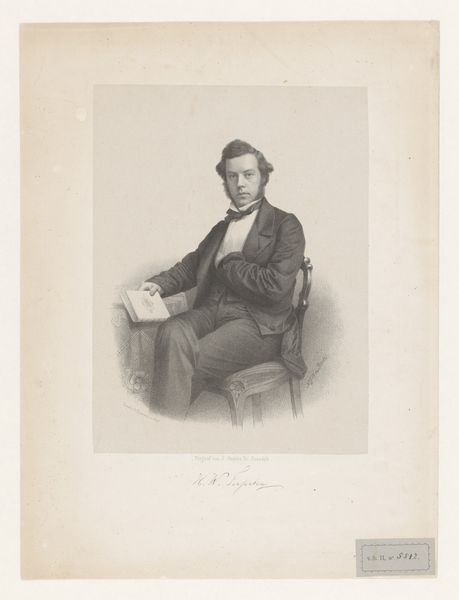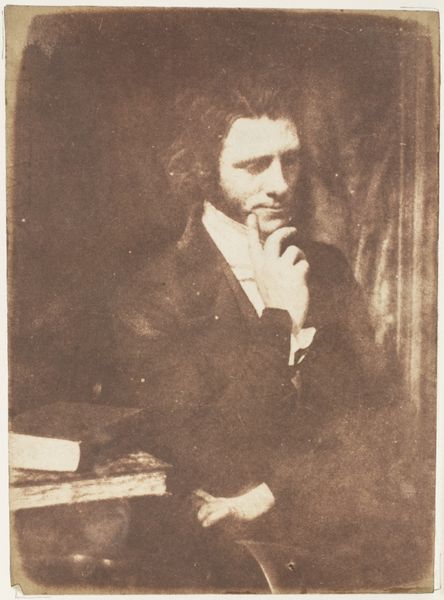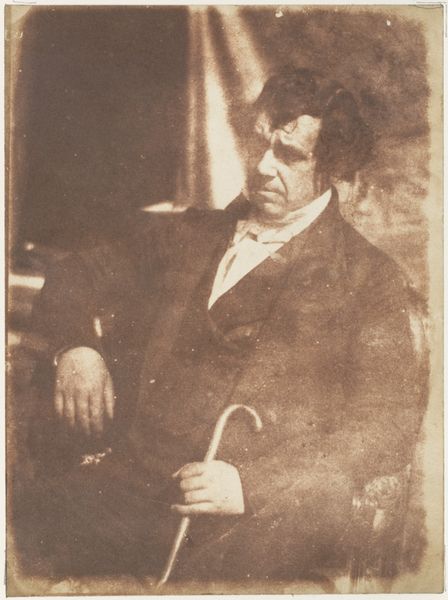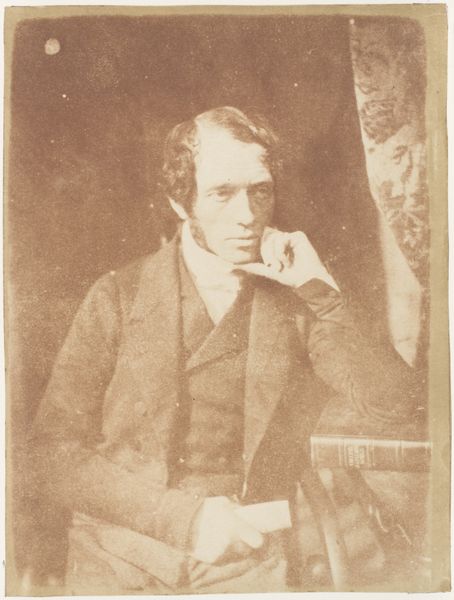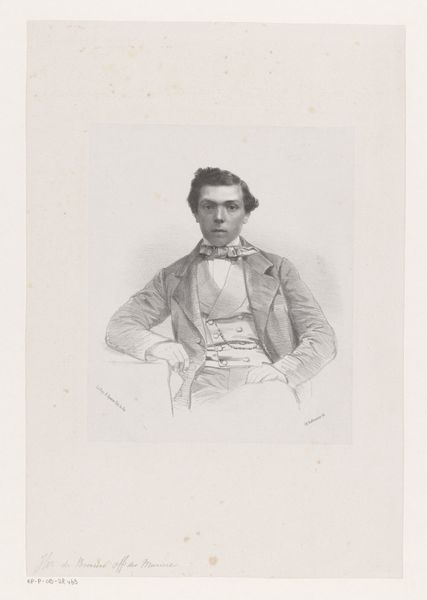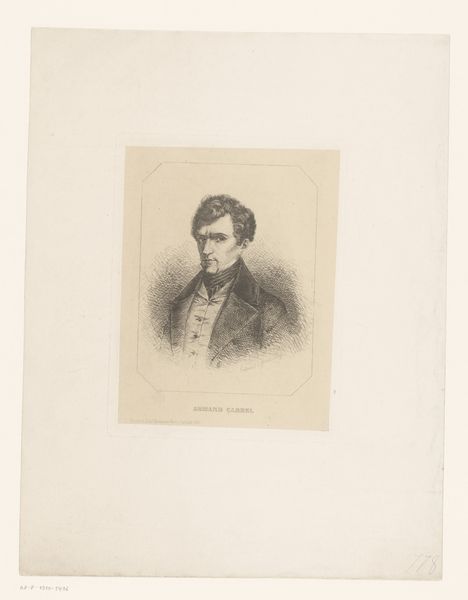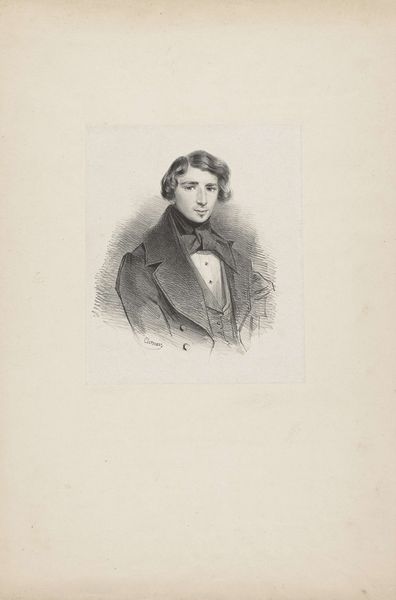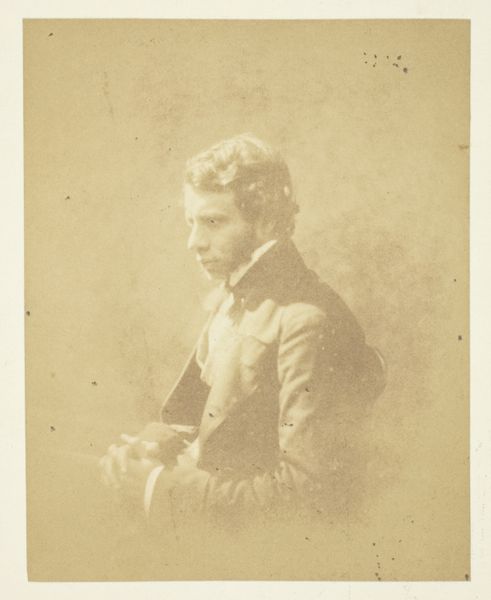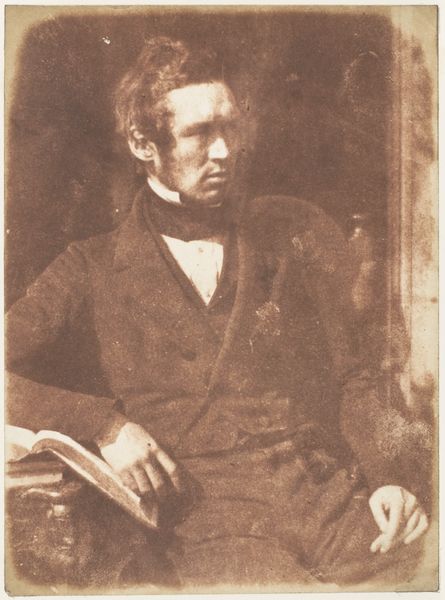![[Man] by Hill and Adamson](/_next/image?url=https%3A%2F%2Fd2w8kbdekdi1gv.cloudfront.net%2FeyJidWNrZXQiOiAiYXJ0ZXJhLWltYWdlcy1idWNrZXQiLCAia2V5IjogImFydHdvcmtzLzE0NTZjMTRmLTQxYTYtNDMxZi1hMTFmLTY0ZGI0MDZlYjFkNi8xNDU2YzE0Zi00MWE2LTQzMWYtYTExZi02NGRiNDA2ZWIxZDZfZnVsbC5qcGciLCAiZWRpdHMiOiB7InJlc2l6ZSI6IHsid2lkdGgiOiAxOTIwLCAiaGVpZ2h0IjogMTkyMCwgImZpdCI6ICJpbnNpZGUifX19&w=3840&q=75)
daguerreotype, photography
#
portrait
#
daguerreotype
#
photography
#
romanticism
#
men
#
portrait drawing
#
realism
Copyright: Public Domain
This photograph by Hill and Adamson was made around 1843, using a process called calotype. This early photographic technique involved coating paper with silver iodide, making it sensitive to light. The resulting image, as you can see, has a soft, almost painterly quality, quite different from the sharp, crisp photos we're used to today. Look closely and you’ll notice the texture of the paper itself contributes to the image. This direct engagement with the materials – the paper, the chemicals, the light – gives the photograph a unique material presence. The calotype process required long exposure times, which meant the sitter had to remain still for several minutes. This is why there is a solemn stillness. The calotype, as a relatively accessible process, democratized portraiture to some degree. This interplay between science, craft, and social context is what makes this photograph so compelling. It bridges the gap between fine art and the everyday world.
Comments
No comments
Be the first to comment and join the conversation on the ultimate creative platform.
